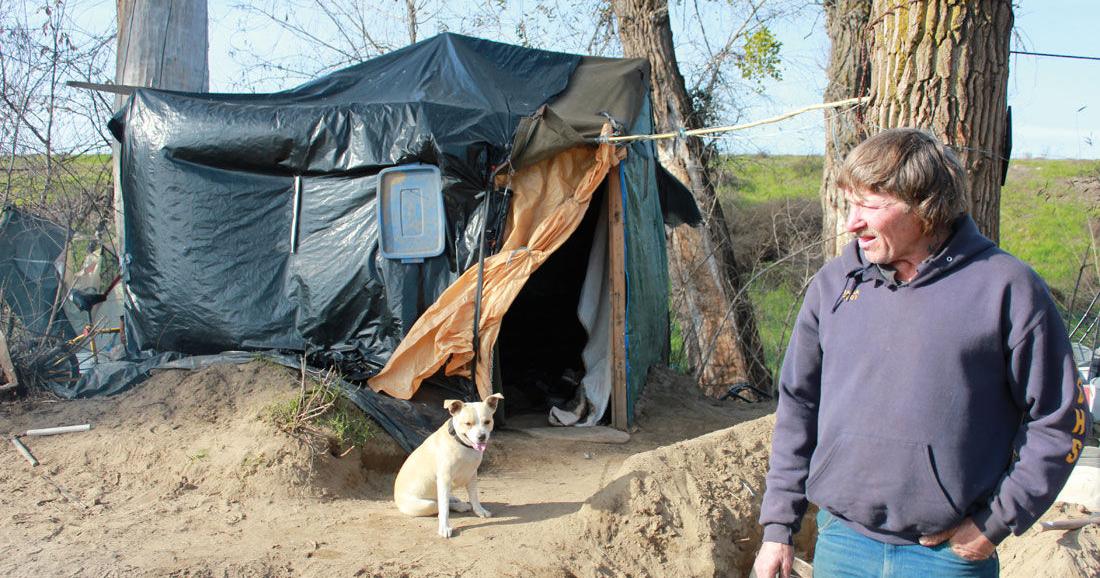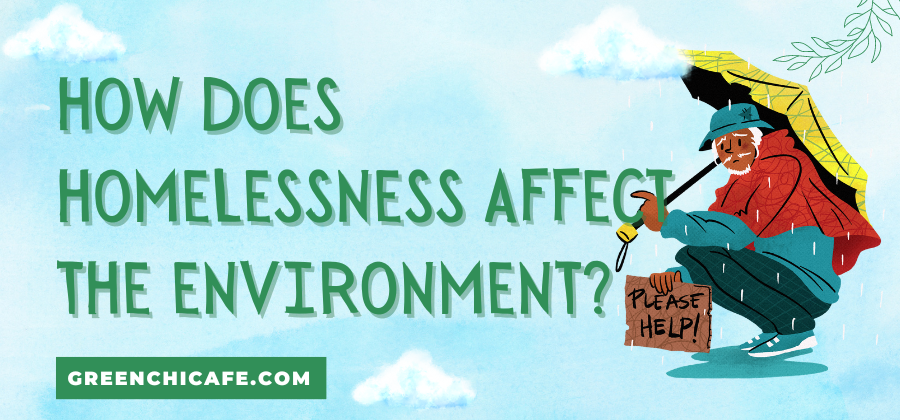While its most devastating impacts are on the homeless themselves, the crisis of homelessness also interacts with and shapes urban environments in complex ways environmentalists are just beginning to examine.
Homelessness entails urgent social justice, public health, and safety dimensions – but intersects with the physical environment too.
As climate change exacerbates housing vulnerability, exploring these dynamics fosters more holistic solutions.
How Does Homelessness Affect the Environment?

Homelessness interacts with the urban environment in complex ways, including encampments damaging habitats and green spaces, contamination from trash and waste, loss of trees and cooling shade cover, and amplified disaster vulnerability.
Integrated housing, sanitation, and environmental restoration solutions are needed.
Key Points
- Encampments can degrade habitats and overload public parks with litter and waste.
- Loss of green spaces exacerbates urban heat island effects, endangering the homeless most.
- Tiny home villages with gardening and habitat restoration training empower sustainability.
Does Homeless Encampment Location Impact Ecology?

Yes, encampments in rights-of-way, wetlands, and vacant lots can trample vegetation, compact soil, introduce debris, and disrupt wildlife.
Sensitive area protection helps.
How Does Homelessness Strain Public Green Spaces?
Overuse of parks by people experiencing homelessness taxes public resources like grass, trees, and landscaping while leaving litter that harms animal habitats without proper cleanup.
Can Homelessness Impact Watersheds and Waterways?
Yes, contamination from trash, human waste, and hazardous materials at encampments seep into watersheds while blocking storm channels exacerbates flooding.
Proper sanitation access could help.
Does Homelessness Increase Community Heat Risks?
Green space and tree cover loss where encampments occur eliminates cooling shade cover and evaporative effects that mitigate urban heat islands endangering homeless people most vulnerable to heat waves.
Does Homelessness Increase Disaster Vulnerability?
Yes, homeless people face amplified environmental hazards from extreme heat, storms, and wildfires with inadequate shelter, warning systems, healthcare, and the ability to evacuate placing heavy rescue burdens on responders.
Could Tiny Home Villages Offer Sustainable Housing?
Possibly.
Eco-friendly clustered tiny home villages with community green spaces provide lower-impact supportive housing to transition people off the streets into stability, health, and environmental stewardship.
How Can Environmental Work Address Homelessness?
Environmental projects can train and hire homeless residents to build skills and income to afford housing while improving habitat and open space access for all.
This empowers communities.
How Does Homelessness Hurt the Environment?
Homelessness can degrade urban environments through issues like uncontrolled waste, contamination from improperly disposed hypodermic needles, public hazards from unattended fires, and accumulation of litter in public green spaces.
Habitats and vegetation get damaged when encampments form in inappropriate locations lacking sanitation infrastructure.
Overburdening of parks and recreational areas also degrades soil, compacts tree roots, and tears up landscaping that requires rehabilitation.
Untreated human waste and garbage attract pests while polluting watersheds.
Hazardous debris like lead-acid batteries and lithium-ion e-waste at large encampments poses contamination risks when discarded unsafely.
Loss of tree cover where encampments occur worsens heat island effects. While mainly a humanitarian crisis, homelessness interacts with environments in ways requiring integrated solutions.
What Effects Does Homelessness Have on the Environment?
Key effects of homelessness on the physical environment include habitat degradation, soil compaction, vegetation loss, contamination from trash and biohazards, increased flooding risk where encampments block stormwater channels, burdening of public parks and recreational green spaces, litter accumulation, weakened flood resilience without vegetation, urban heat amplification from tree canopy loss, aquifer risks from sewage, and e-waste pollution from disposed batteries and electronics.
However, while these environmental impacts from uncontrolled homelessness are real, the primary urgency remains compassionately addressing human needs through housing, sanitation, health services, and community integration – not dispersing people without solutions.
With care and wisdom, positive environmental outcomes naturally follow social uplift.
How Can We Lessen the Environmental Impact of Homelessness?
Providing adequate transitional and permanent supportive housing reduces dependence on encampments while restoring dignity.
Ecological impacts are then mitigated through access to proper waste disposal and sanitation.
Expanding tree cover also builds climate resilience when paired with housing.
Training and hiring formerly homeless people for environmental renewal projects generate income while rehabilitating communities and habitats.
Ultimately, resolving homelessness and healing environments go hand-in-hand.
Key Takeaway:
- While complex, integrating environmental care into homelessness solutions uplifts both people and urban ecosystems toward equity, justice, and sustainability for all inhabitants.
FAQ
Does Homelessness Increase Public Safety Threats?
Poorly located encampments can exacerbate fire risks and other hazards. However data shows homeless persons are disproportionately victims rather than perpetrators of crime.
Should Encampments Be Forcibly Cleared?
Environmental damage concerns do not justify inhumane forced dispersal without providing housing alternatives. Environmental stewardship and social justice must be jointly pursued.
How Can Sanitation Access Help?
Providing portable toilets, hand washing, and trash pickup at encampments prevents public health hazards and environmental degradation while respecting dignity.
At GreenChiCafe, we believe sustainability encompasses both ecology and social justice.
Please visit our site to learn more about building an equitable planet for all.
